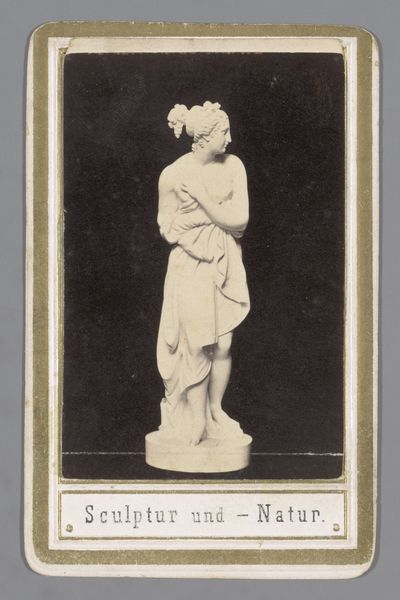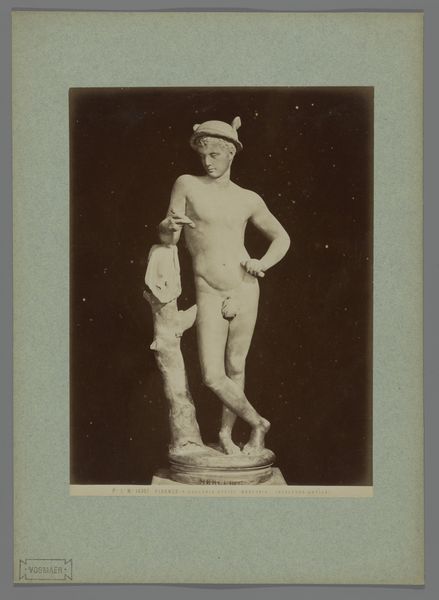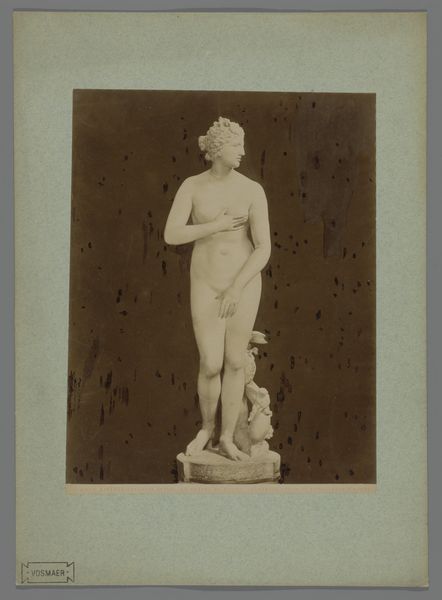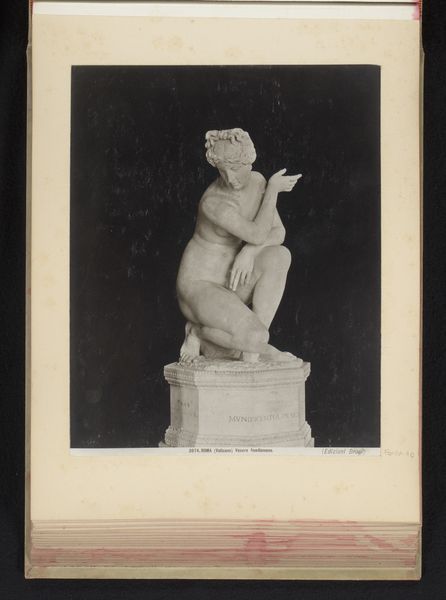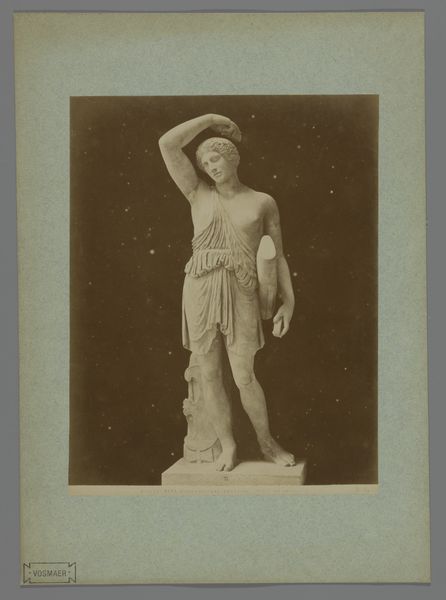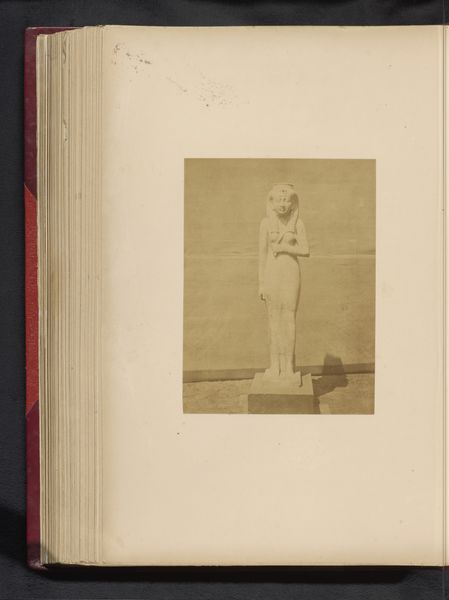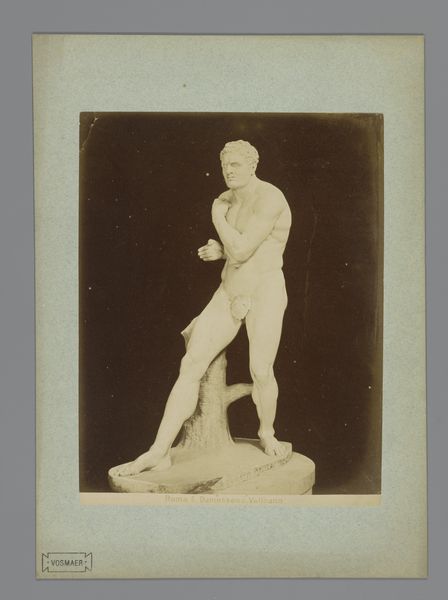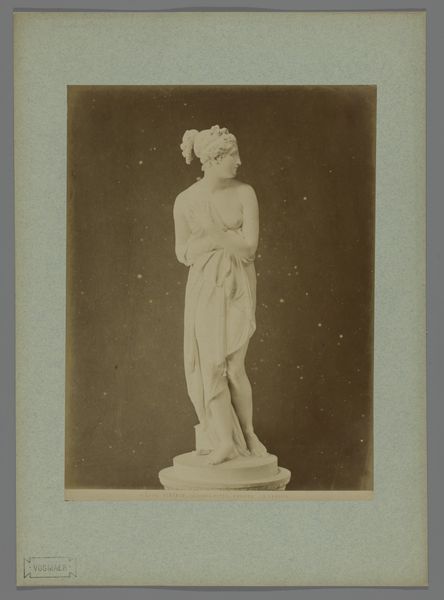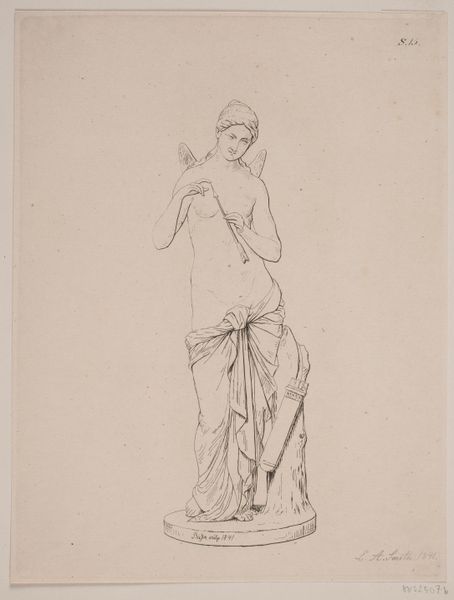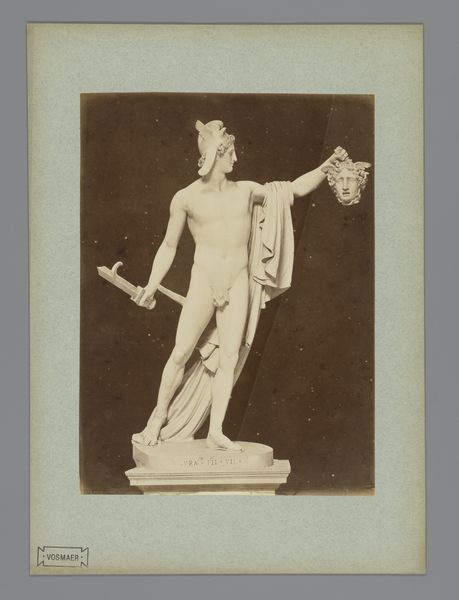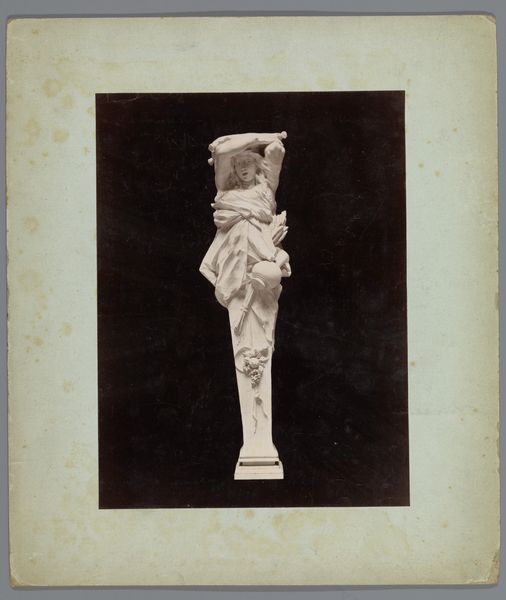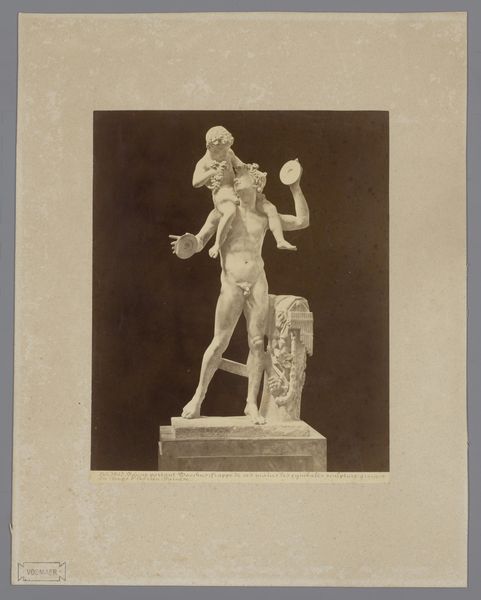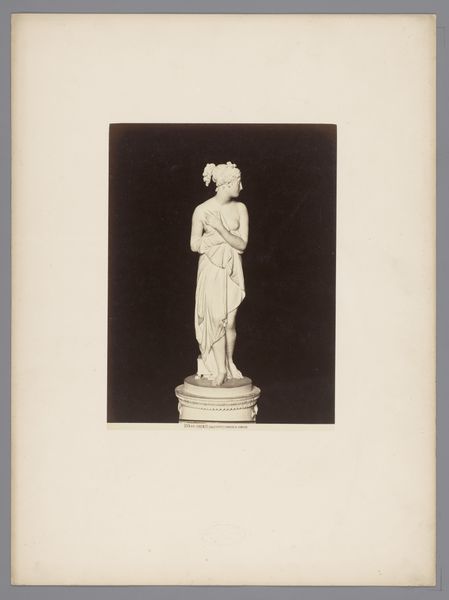
photography, sculpture
#
portrait
#
greek-and-roman-art
#
photography
#
sculpture
#
academic-art
#
nude
Dimensions: height 248 mm, width 191 mm, height 355 , width 255
Copyright: Rijks Museum: Open Domain
Editor: This photograph, taken by Fratelli Alinari sometime between 1852 and 1900, captures a sculpture of Danaïde located in the Vatican Museums. I’m immediately struck by the contrast – the stark white of the marble against the dark background really emphasizes the figure’s form. How do you approach interpreting this piece? Curator: I see it as a fascinating collision of industries and intentions. The sculpture itself, rooted in classical themes and likely produced in the academic style, speaks to a specific mode of artistic production focused on skill and established conventions. But the photograph? That transforms the artwork into a commodity, a replicable image made possible by industrial advances. Think about the materiality of both objects: marble, painstakingly carved, versus a photograph, chemically produced on paper. Editor: So, you're focusing on how the photograph changes the way we interact with the sculpture. Curator: Precisely. It democratizes access, certainly. Suddenly, this sculpture in the Vatican can be "owned" by anyone who purchases the photograph. What does this mean for the artistic labor involved? The sculptor's craft is translated, mediated, and in a sense, consumed differently through the photographic reproduction. Is the value then transferred from the original sculptural creation to its representation? Editor: That’s a compelling point! It raises questions about authenticity and the role of technology in shaping our perception of art. The photograph itself becomes an object of consumption. Curator: Exactly! Consider the albumen print process used to create these photographs, utilizing egg whites, or the rise of photographic studios catering to the burgeoning tourism industry. Each step is steeped in material processes and economic considerations that profoundly influence our encounter with “art.” Editor: I see what you mean. Analyzing it this way really shifts the focus from just the artistic value of the sculpture itself, to the processes surrounding its creation and distribution. Thanks, I learned so much! Curator: My pleasure. It's all about unpacking the layers of material reality that construct our understanding of art.
Comments
No comments
Be the first to comment and join the conversation on the ultimate creative platform.
